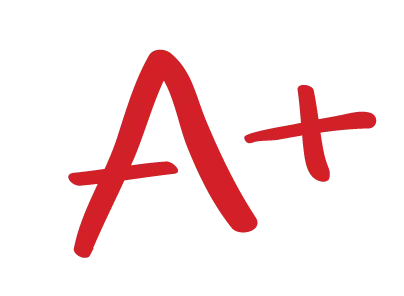Health Economics 445: Problem Set 3
1) Difference-in-Differences (30 points)
WRITE THIS ESSAY FOR ME
Tell us about your assignment and we will find the best writer for your paper.
Get Help Now!Suppose we are interested in quantifying the effects of Massachusetts health reform on emergency room utilization. Hypothetically, suppose that 208,000 out of the 4 million nonelderly adults living in Massachusetts were using the emergency room in a representative pre-reform year. This compares, hypothetically, to 12 million nonelderly emergency room users adults out of the 200 million nonelderly adults living in other states in a representative pre-reform year. Suppose that in a representative post-reform year, about 192,000 out of the 4 million people in Massachusetts use the emergency room. Suppose also that we see about 12.5 million (out of the 200 million people living in other states) using the emergency room in a representative post-reform year.
- Draw a 2 by 2 matrix which describes the fraction of people using the emergency room in the treatment group and the control group before and after the reform ( 5points)
- Quantify the difference-in-differences effect of Massachusetts health reform on emergency room utilization. Interpret the finding. (10 points)
- Provide an intuition for the difference-in differences strategy (5 points)
- Draw the points from the 2-2 matrix in a diagram that has two time periods (pre and post) on the horizontal axis and emergency room utilization on the vertical axis. Add the hypothetical emergency room utilization in Massachusetts had Massachusetts not had the health reform (Hint: we are using the difference-in-differences strategy that assumes that Massachusetts would see the same national trend in emergency room utilization in the absence of a reform). Show the difference-in-differences effect graphically in the diagram (10 points)
2) Pharma Pricing (40 points)
Imagine you are the CEO of Bayer and your R&D team has just developed a blockbuster drug to treat high blood pressure. You successfully went through clinical trials and you have FDA approval so you are ready sell it on the market. The regulator has given you a patent length of 20 years and now you are
trying to figure out the optimal price for the drug. Your marketing department has crunched a few numbers and figured the following demand curve per year:
Q=1,800,000- 2,000*P
Where P is the price per drug in dollars and Q is the quantity demanded in the year at that price. The research group also tells you that they spent $2 billion on research and development. However they can now produce the drug for $400 per piece.
Health Economics 445
- Derive the inverse demand curve (5 points)
- Derive the annual revue curve in terms of the quantity of drugs being sold, and quantify the
marginal revenue curve which indicates the marginal increase in revenues from a marginal increase in quantity (hint: Δa∗Q∗QΔQ = 2 ∗ ∗ ) (5 points)
- Derive the profit-maximizing price and quantity. What is the variable profit per year? (5 points)
- In a diagram with quantity on the horizontal axis and price and mc on the vertical axis, draw the inverse demand curve, the marginal revenue curve, and the marginal cost curve. Derive the optimal price graphically. (5 points)
- Is the marginal revenue steeper or flatter than the inverse demand curve? If so why? (5 points)
- Quantify the average cost curve (5 points)
- Suppose that generic companies enter the market once the patent elapses, which leads to perfect competition. Suppose the generic companies have the same marginal costs. What will be the equilibrium price under perfect competition? (5 points)
- Is Bayer able to recover the fixed costs of R&D through variable profits? Assume that there is no profit discounting in future years, so profits next year count equally as profits this year. (5 points)
3) Supplier Induced Demand (30 points)
Health Economics 445
Greedy John has his own outpatient imaging center on Beaver Avenue and specializes in CT scans. For each scan, he receives a reimbursement of $0.5 from the insurer. He knows his patients very well and considers that 8 scans per month are clinically adequate. However, Greedy John also knows that he can boost his income by inducing additional CT scan images, I. On the other hand, Greedy John knows that the insurer might come after him if he conducts too many scans. Therefore, his utility increasing in income, Y, but decreasing in the number of induced additional CT scan images, I, and given as follows:
= 200 ∗ − 10 ∗ 2 − (100 ∗ − 5 ∗ 2)
With the following marginal utilities = 200 − 20 ∗ and = −100 + 10 ∗ .
- Suppose that John’s income is solely generated from CT scans. Describe John’s budget constraint
(5 points)
- Calculate the optimal number of induced CT scans ≥ 0. (10 points)
- Now suppose that the insurer reduces the reimbursement rate to $0.25, how does that affect the number of CT scans? Is this measure effective in reducing wasteful procedures? (5 points)
- Let’s abstract from the specific numeric example. Does a reduction in the reimbursement rate necessarily lead to a reduction or increase in the number of CT scans? If not, on which effects does it depend on? Discuss your answer graphically using a diagram with CT scans on the horizontal axis and income on the vertical axis. (10 points)
- Health Economics 445
Introducing our Online Essay Writing Services Agency, where you can confidently place orders for a wide range of academic assignments. Our reputable homework writing company specializes in crafting essays, term papers, research papers, capstone projects, movie reviews, presentations, annotated bibliographies, reaction papers, research proposals, discussions, and various other assignments. Rest assured, our content is guaranteed to be 100% original, as every piece is meticulously written from scratch. Say goodbye to concerns about plagiarism and trust us to deliver authentic and high-quality work.



